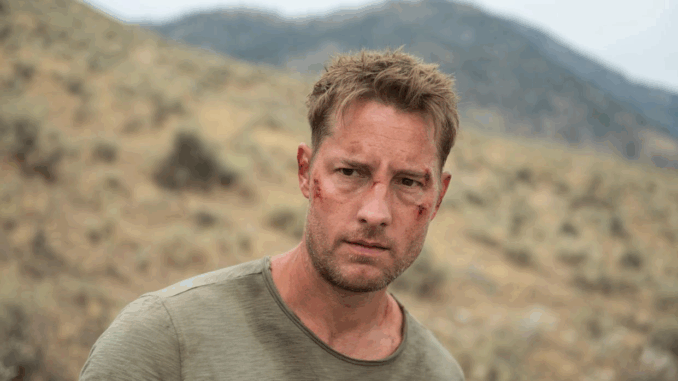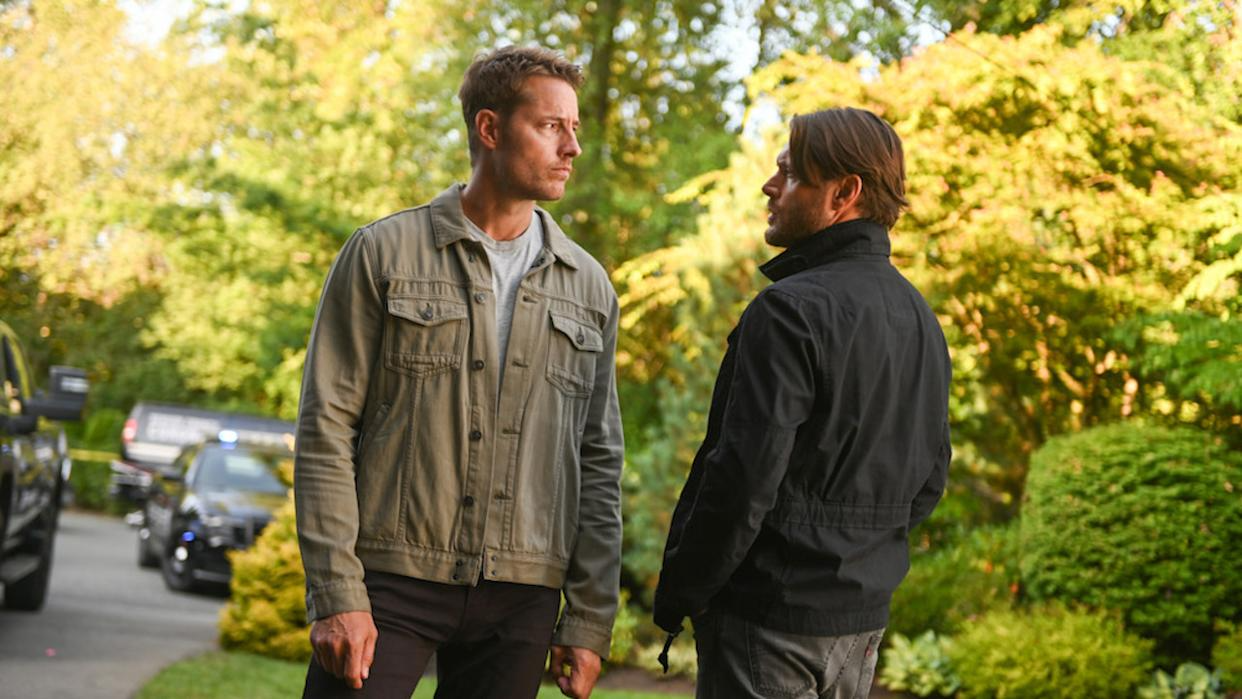
If you’ve been following the hit CBS drama Tracker starring Justin Hartley as Colter Shaw, you’re in for a twist. The show’s executive production team has openly stated that the network wants Colter to be exposed to greater danger than ever before. That means bigger stakes, more risk, and a shift away from comfort zones in favour of pure suspense. In this article, I’ll walk you through everything this revelation means—for Colter, for the show’s tone, and for you as a viewer.
1. Why the Network Pushing Colter Into More Risk Matters
Let’s begin with the obvious: when a network says “we want more danger for our lead character,” they’re signalling a creative reset. For Tracker, it means the comfortable rhythm of Colter hopping from one reward mission to the next without real personal jeopardy is being amplified. In short: expect that the hunter becomes hunted.
This is exactly the kind of meta-creative move that keeps long-running shows fresh. If you never raise the stakes, the audience gets complacent. CBS doesn’t want Colter to cruise—he’s about to dive.
2. What Colter’s Danger Could Look Like
Okay, what does “danger” actually mean in this context? Here are plausible directions:
-
Personal threats: Colter’s past catching up with him, making him vulnerable rather than invincible.
-
Injury or failure: He might get hurt in the job, lose someone, or face consequences for his methods.
-
Emotional stakes: Not just physical danger, but relational, moral, and family risk.
Since Colter has already had glimpses of his father’s death, his family mystery and his survivalist back-story, the danger could tie to his roots. When you dig deep, the risk becomes richer.
3. The Executive Producer’s Role: Why Their Word Matters
When the executive producer of a TV show says the network wants “more danger” for the lead, you pay attention because:
-
The EP helps shape the arc and tone of the series.
-
They signal what type of season ahead is being built—not just episode to episode, but overall journey.
Therefore, this isn’t a throw-away quote—it’s a blueprint. Tracker is headed into new territory, and you heard it from the top.
4. The Shift in Tone: Moving from Procedural Comfort to High-Risk Drama
Tracker has followed a strong formula: Colter takes on reward missions, solves cases, moves on. Comfortable, reliable. Now? The tone is shifting. Think less “case of the week” and more “what happens when the case hits you back”.
Danger injected means less predictability. That’s good. When you can guess the beat, the thrill fades. More risk means renewed suspense, which means you’ll lean in.
5. Colter Shaw: The Man Behind the Tracker
Let’s talk about the character of Colter Shaw. He’s a survivalist turned high-stakes tracker—skilled, resourceful, hardened by his past. But up until now, he’s been in control of the hunt. The revelation that danger is coming his way flips his world.
When the hunter loses control, the story becomes richer. We’ll see the façade crack. We’ll see the person behind the skillset show cracks. That’s compelling.
6. Family, Vulnerability & Hidden Past: Why the Danger Evolves
Colter’s back-story includes his father’s death, a survivalist upbringing, and family secrets. The executive producer’s statement implies that it’s not just external danger but the internal kind too—family mysteries, betrayal, past trauma.
When a show taps into that vulnerability, the risk is emotional as much as physical. Viewers feel it. They root harder. The danger for Colter might be the kind you can’t punch your way out of.

7. Audience Engagement: Why This Shift Is Smart
This move isn’t just for shock value. It’s smart from a viewer-engagement standpoint. Here’s why:
-
It raises stakes which means greater emotional investment.
-
It says: things will change. That keeps long-time viewers hooked.
-
It invites speculation: “What danger is waiting for Colter?” That buzz fuels social media, fandom, conversation.
By doing this, the show isn’t playing safe—it’s reclaiming excitement.
8. What Fans Should Expect: New Story Arcs & Darker Turns
Given the network’s direction, here’s what to watch for:
-
Episodes where Colter’s decisions backfire.
-
Cases that hit too close to home.
-
Threats to his team, his family, his survival.
-
Moments where Colter gets stripped of his control and forced to scramble.
-
A narrative arc where the reward-hunter becomes the target.
When you see these signs, you’ll know the show is delivering on that “more danger” promise.
9. Why This Does Not Mean Abandoning What Works
Important nuance: Danger doesn’t mean forgetting everything fans love—colours, camaraderie, case resolution. The network still needs to balance. Tracker isn’t swapping out its DNA. It’s enhancing it.
So you’ll still get the episodes where Colter applies his skills and you feel satisfaction. But now there’s added tension: what if this time he doesn’t win so cleanly? The show’s comfort zone gets a shake-up—not a destruction.
10. The Role of Justin Hartley: Actor + Executive Producer
Justin Hartley isn’t just playing Colter—he’s an executive producer. That dual role gives him skin in the game. When he talks about the show evolving, you know he’s invested.
The danger for Colter is also a challenge for Hartley. As an actor, pushing into riskier territory often means deeper performance, bigger arcs. Expect his role to expand in complexity. That bodes well.
11. Why Danger Works Best with an Established Hero
There’s a storytelling principle: heroes become interesting when they risk more. When everything’s fine, you don’t need to care. But when they’re exposed, vulnerable, uncertain—then you lean in.
Colter has built trust with the audience; he’s gotten the job done. Now that he’ll face danger, the payoff is greater. You’ll care not just that he solves the case, but how he survives.
12. Danger Brings Unpredictability—and That’s Gold for a TV Series
In a TV age saturated with content, unpredictability is gold. If you can guess what happens next, you drift off. The network pushing Colter into danger means the writers have license to surprise us—twists, reversals, big jeopardy.
It’s like turning up the heat in a pressure-cooker: the show might create steam—and we’ll see something dynamic.
13. The Landscape of the Show: Setting, Threats & Environment
Remember: Tracker doesn’t just take place in neat offices. Colter is out in wildernesses, deserts, remote terrain, rugged landscapes. That environment is part of the danger.
When they say more danger, expect geography, environment, nature itself to play bigger roles. The terrain might fight back. The case might literally trap him. That’s cinematic TV—and network-scale.
14. Why The Time Is Right for This Shift
The show is fresh enough to change but established enough that deviation won’t destroy its identity. NOW is the right time. If it waited too long, risk would feel desperate. Too early—fans wouldn’t be ready. But now? The foundation is solid, the audience invested, and they can expand.
The executive producer’s note is a signal: we’re in transition—not desperation.
15. Final Thoughts: Brace for Colter’s Toughest Mission Yet
If you watch Tracker, you’ve seen Colter Shaw in many scenarios—but nothing yet like what’s hinted at now. The network and production team are aligning to move the character into deeper danger: emotional, physical, psychological.
That’s not just a shift—it’s evolution. And for you, the viewer, it means you’re not just turning on another Sunday hour—it means you’re in for a ride. Buckle up.
Conclusion
When the executive producer of Tracker states that CBS wants more danger for Colter Shaw, it isn’t idle hype—it’s a strategic creative choice. This shift opens the door for richer character development, higher stakes, and episodes that might leave you breathless. If you thought Colter’s worst days were behind him, think again. The show is steering him into uncharted territory, and that promise of danger might just make Season 3 unforgettable.
FAQs
Q1: What does “more danger” for Colter Shaw actually mean for the show?
It means Colter will face bigger threats—physically, emotionally, and in his relationships—not just the typical case-of-the-week scenarios but life-altering risks.
Q2: Will Tracker stop doing weekly episode structures in favour of a big season arc?
No. The weekly structure will remain, but embedded within it is a larger season-long arc of danger and transformation for Colter.
Q3: How will this change affect supporting characters in Tracker?
Support characters will likely gain more agency—they’ll become part of the danger rather than just backup. When the lead is in peril, everyone around him matters more.
Q4: Does Justin Hartley’s role as executive producer mean this change is likely to happen?
Yes. His dual role means he influences direction. When he and the EP team indicate a shift toward risk, it’s likely baked into the season’s blueprint.
Q5: Should viewers be worried this change means the show is going off-brand?
Not necessarily. Risk doesn’t mean abandoning what you love—it means elevating it. The show is sticking to its core (Colter tracking cases) but layering on higher stakes. That might make it better.
